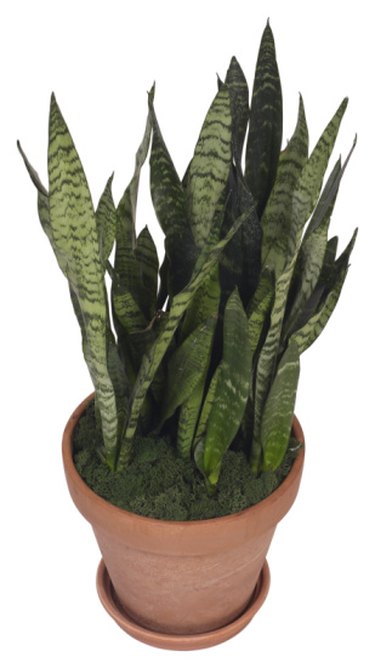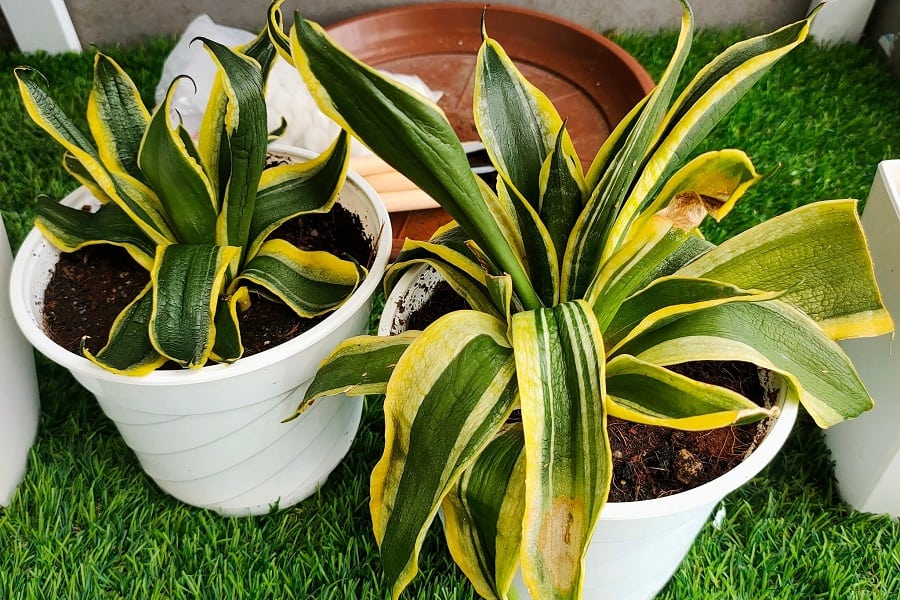Getting My Snake Plant Leaves Turning Yellow To Work
Wiki Article
The Best Strategy To Use For Snake Plant Leaves Turning Yellow
Table of ContentsThe Snake Plant Leaves Turning Yellow PDFsHow Snake Plant Leaves Turning Yellow can Save You Time, Stress, and Money.Snake Plant Leaves Turning Yellow Can Be Fun For AnyoneSnake Plant Leaves Turning Yellow Fundamentals ExplainedThe Definitive Guide to Snake Plant Leaves Turning YellowMore About Snake Plant Leaves Turning Yellow
Below are 7 factors your snake plant's leaves can be transforming yellow and how to repair it. Numerous various plant issues can cause yellow fallen leaves, or chlorosis. Chlorosis takes place when plants do not have the micronutrients they need to create chlorophyll, which makes foliage eco-friendly and enables plants to convert sunlight into food.Snake plants are dry spell forgiving thanks to their succulent fallen leaves (Snake Plant Leaves Turning Yellow). These plants expand ideal in loose, well-drained dirt that's permitted to dry out completely in between waterings and may only require water as soon as monthly during winter season. Overwatering can avoid roots from absorbing wetness and nutrients that the plant needs and can also cause origin rot
A potbound plant can't soak up nutrients from the soil. If your serpent plant is chock-full or outgrowing its pot, this might be the source of yellow fallen leaves. A periodic yellow leaf is totally typical for a snake plant. As the plant ages, old fallen leaves yellow, die, and leave as they're replaced with brand-new ones.
Not known Details About Snake Plant Leaves Turning Yellow

If the leaves on your serpent plant are obtaining soft, it's typically an indicator of as well much water. Serpent plants store water in their leaves and if they're overwatered, the fallen leaves can become soft and mushy. If you believe your snake plant is being overwatered, permit the soil to dry completely before sprinkling once more.
Yes, some yellowing is normal and to be expected on older fallen leaves, specifically as snake plants age. If the plant is otherwise healthy and balanced and the leaves are only gently yellowed then there is no reason for problem. If the fallen leaves are dramatically yellowed or if there are other signs of distress then it's best to take activity.
How Snake Plant Leaves Turning Yellow can Save You Time, Stress, and Money.

In basic, snake plants ought to be watered every one to two weeks. If you think your snake plant has been overwatered, the first step is to stop sprinkling it.
With a little examination, you must have the ability to identify the reason and take steps to repair the problem and have a healthy snake plant. - Snake Plant Leaves Turning Yellow
Snake Plant Leaves Turning Yellow Can Be Fun For Anyone
The snake plant is an awesome houseplant. The serpent plant is one of those plants that are wonderful for expanding inside in a terrarium, Snake plants can grow fairly large, yet they also have a tendency to be pretty low-maintenance.When the dirt is overwatered, the plant cells absorb more water than they can keep. Sagging serpent plant fallen leaves are caused by soaked-up leaf cells shedding their suppleness.
It is, for that reason, extra most likely that your plant will find yellow spots on its fallen leaves if you overfeed it with plant food during wintertime. The fallen leaves of snake plants are likewise at risk to yellowing when overfed, especially if the origins are fragile. Repotting your yellowing, sprinkling just when the dirt dries, and providing ideal temperature level and light problems can wait.
3 Easy Facts About Snake Plant Leaves Turning Yellow Described
To quit yellowing created by overwatering, stop watering the snake plant till the soil visit the site entirely dries out. Water your the original source serpent plant just when the top two inches of dirt really feel dry.Your can be eliminated by cutting off the yellow tips. The trimmed fallen leaves need to grow longer if they are watered correctly and have optimum light and temperature level problems. It is necessary to keep in mind that the pointed suggestions will certainly not regrow, triggering them to stand apart from the rest of the fallen leaves.
It won't take wish for the leaves to grow back and expand like the healthy fallen leaves around them. Alternately, you can remove damaged fallen leaves from the base of the plant. The indicates that it's obtaining too much or insufficient light or nutrients. The essential message is to allow the serpent plant time to recover.
Unknown Facts About Snake Plant Leaves Turning Yellow
Scroll the write-up till the end to find the option. Pay attention to this post below: The situation can be expected if you have had your snake plant for a very long time, and yellowing takes place on the reduced leaves as an all-natural aging cycle. Also, it is typical for the Sansevieria entrusts to transform yellow due to amateur errors and when the plant is just gotten from the nursery for repotting.Some of the most common causes are listed below. Sansevierias like dry climates and choose little water preserved at a space of one or two times regular in summertime and regular monthly in winter season. However when the water dosage obtains out of control, your Sansevieria will try this deal with overwatering. One of the most common issue provided by overwatering is root rot leading to mushy roots and stems with a foul scent.
Report this wiki page